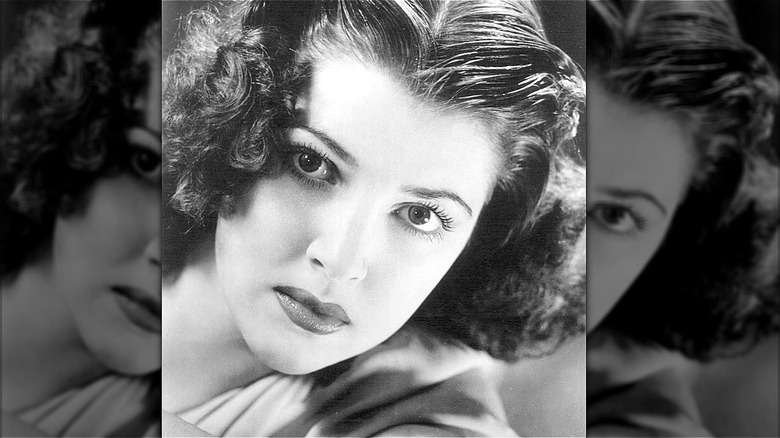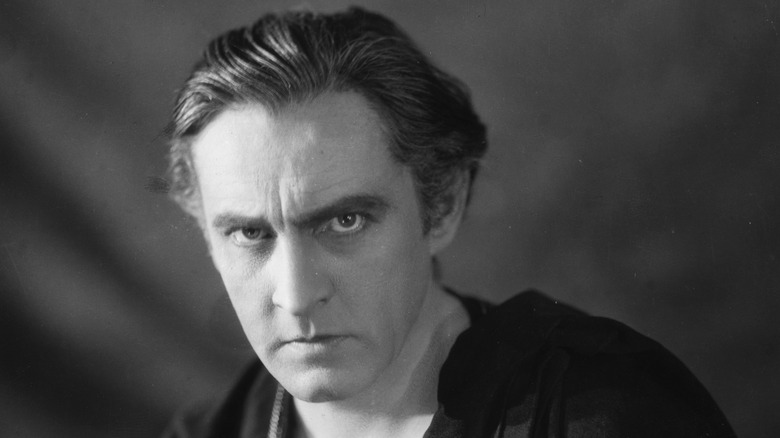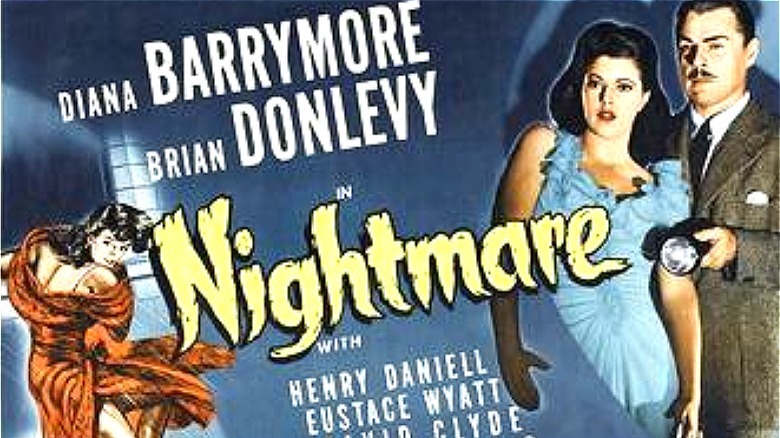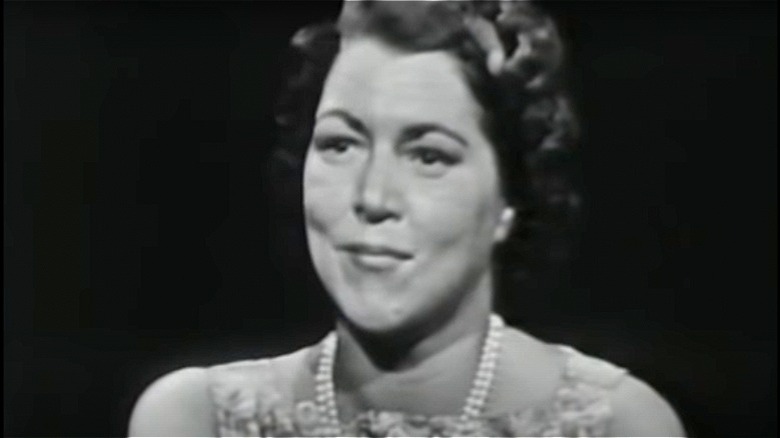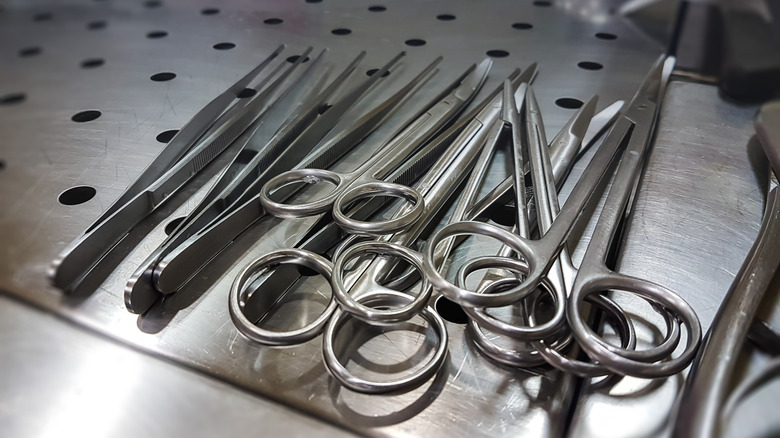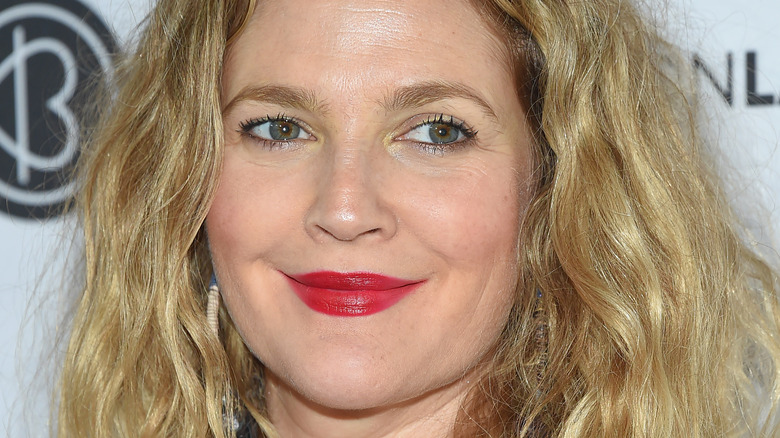The Mysterious 1960 Death Of Diana Barrymore
The maid found her lying face down in bed at her Manhattan apartment on the Upper East Side on the morning of January 25, 1960. The actress was 38, but looked years older. According to The New York Times, there were empty liquor bottles, sleeping pills, and tranquilizers in the apartment. Diana Barrymore was dead. She had been given every advantage one could imagine. Barrymore was born into the first family of American acting, sent to the best schools, was a high society debutante, and had a Hollywood career. But the one thing she was never given was the one thing she needed most.
"When you have everything, unless you're a very stable human being or have some stability in your life — your parents, for instance — you're liable to go off half-cocked, which is indeed what I did," she told CBS journalist Mike Wallace in a 1957 television interview. "I didn't have anyone to tell me what to do." Her doctor believed Barrymore had died of natural causes. Dr. Milton Halpern, New York City's chief medical examiner, ordered an autopsy to determine the exact cause of death, per The New York Times.
American acting royalty
Joan Strange Blythe, Diana Barrymore's actual name, was born in New York City on March 3, 1921 to John Barrymore and Michael Strange, according to The New York Times and the San Francisco Examiner. Her father was Hollywood royalty and her mother — real name Blanche Marie Louise Oelrichs — was a poet, playwright, actress, and member of a wealthy and distinguished New York family, per Britannica. Strange, who was married, had an affair with Barrymore while he was performing in a Leo Tolstoy play she'd adapted for the Broadway stage. They eventually married and had one child, Diana, before divorcing in 1928, per Britannica and The New York Times.
Diana Barrymore's grandfather, Maurice Barrymore (birth name Herbert Blythe), an Englishman born in India, was a stage actor who emigrated to the United States in the 1870s. His wife, Georgiana Drew, came from a long line of actors extending back to the 1700s, according to Biography. Their three children — John, Lionel, and Ethel — followed their parents into the business, preferring the new medium of film in which to make their marks, although all three also acted on Broadway. Likewise, Diana and her half-brother, John Drew Barrymore, were inexorably drawn to Hollywood, but with less stellar results.
Diana Barrymore goes to Hollywood
After attending several prestigious private schools in the U.S. and Europe, spending two years at the Academy of Dramatic Arts, and performing on Broadway (per The New York Times), Diana Barrymore, not yet 21, headed to Hollywood. She barely knew her father, who she rarely saw growing up (per Vanity Fair), and John Barrymore was already on the way down, but the family name still opened doors for her in Tinsel Town. Between 1941 and 1944, she appeared in eight films, according to IMDb.
Few of her films were memorable, although back in 1938, she was given a shot at the role of Scarlett O'Hara in "Gone with the Wind" when the producer gave her a screen test for the role, according to The Diana Barrymore Papers (New York Public Library Archives & Manuscripts). Her film career stalled out fairly quickly, in part because of her refusal to work with Abbott and Costello, and she soon left Los Angeles (per the American Film Institute). She returned to New York and the stage, but her alcohol dependence and erratic behavior dogged her on the East Coast, as it had on the West.
Too much, too soon
By 1955, Diana Barrymore's life was deteriorating. Her acting career was on life support, both her parents were dead, and her health and personal life were also in shambles. In April, she attempted suicide by taking an overdose of sleeping pills while on tour in Boston, according to the United Press. "I just thought, 'oh, what difference does it make? Why wake up?'" she told Mike Wallace in 1957.
Then, less than two months after her suicide attempt, her third husband, fellow actor Robert Wilcox (who she was also planning on divorcing), died suddenly from a heart attack while on a train, according to The New York Times and the Associated Press. Her first two marriages had both ended in divorce. She would soon be back in the spotlight with her tell-all autobiography, "Too Much, Too Soon," which came out in 1957 and became a huge sensation. Barrymore had gotten sober, and her career was turning around, helped along when her book was turned into a Hollywood biopic, "Too Much, Too Soon." Errol Flynn played his old friend John Barrymore, who had died of cirrhosis of the liver because of his alcoholism in 1942, per TCM and Newsweek.
If you or anyone you know is having suicidal thoughts, please call the National Suicide Prevention Lifeline by dialing 988 or by calling 1-800-273-TALK (8255).
An inconclusive autopsy adds to the mystery
Diana Barrymore relapsed just weeks before her death. It was at a Christmas party with fellow actors, writers, and socialites when someone called her a "sissy" for refusing an alcoholic drink, according to the gossip magazine On the Q.T. She soon began drinking heavily, became moody, and combined alcohol with barbiturates to help her sleep, which can be deadly in combination. The week before her death, she told a friend, Essee Kupcinet, "I'm running out of time," according to UPI.
Her friends believed it was an overdose of sleeping pills that killed her or that perhaps it hadn't been an accidental overdose, but the initial autopsy report didn't back that assumption. The report found nothing unusual and no conclusive cause of death, so Dr. Milton Halpern, New York City's chief medical examiner, ordered further testing. In February 1960, after the toxicology report came back, Halpern announced Diana Barrymore's cause of death as a combination of alcohol and barbiturates, per the Associated Press.
A family history of substance use issues
While Diana Barrymore's death has been described as suicide in various media stories over the years, there is nothing to support this. The police said they didn't suspect suicide, and the medical examiner's report indicated that while Barrymore had a large amount of alcohol in her system, the barbiturates were not enough to kill her. Instead, it was a steady buildup of the drug in combination with the alcohol that caused her death, per UPI and On the Q.T.
Like Diana Barrymore, many members of her family had substance use issues, including her grandfather Maurice, her father, her uncle Lionel, aunt Ethel, and half-brother John Drew, according to American Heritage. Diana said she had her first drink at age 13, reminiscent of her niece Drew Barrymore's history, per "Too Much, Too Soon" excerpted in The Vancouver Sun. Drew Barrymore began drinking at 9 and doing cocaine by 12, per People. Also like her aunt, Drew Barrymore had a distant relationship with her father, John Drew Barrymore, and a string of divorces. Fortunately, Drew Barrymore was able to get sober and continue to have a successful career in the entertainment business.
If you or anyone you know needs help with addiction issues, help is available. Visit the Substance Abuse and Mental Health Services Administration website or contact SAMHSA's National Helpline at 1-800-662-HELP (4357).
